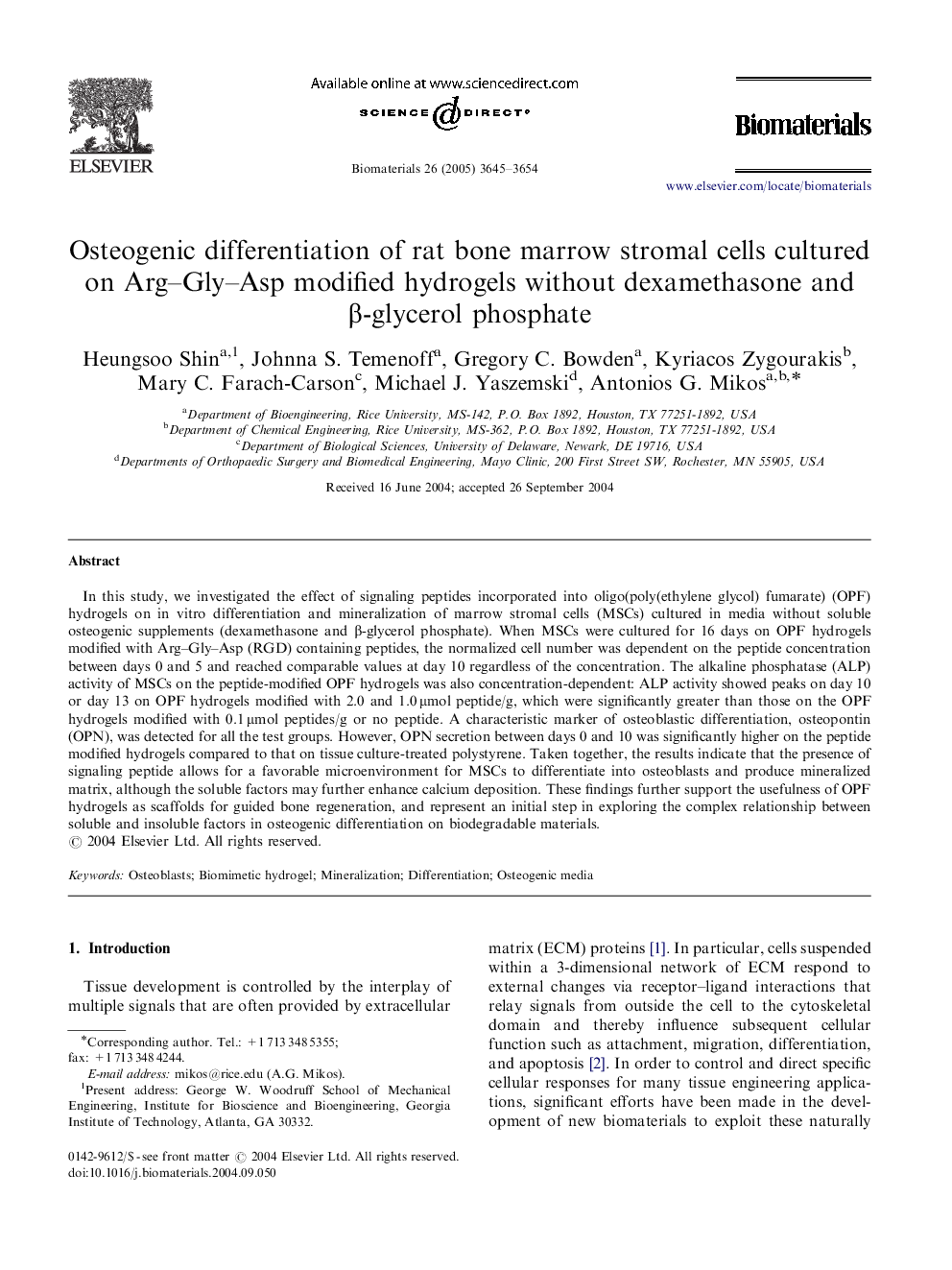| Article ID | Journal | Published Year | Pages | File Type |
|---|---|---|---|---|
| 12745 | Biomaterials | 2005 | 10 Pages |
In this study, we investigated the effect of signaling peptides incorporated into oligo(poly(ethylene glycol) fumarate) (OPF) hydrogels on in vitro differentiation and mineralization of marrow stromal cells (MSCs) cultured in media without soluble osteogenic supplements (dexamethasone and β-glycerol phosphate). When MSCs were cultured for 16 days on OPF hydrogels modified with Arg–Gly–Asp (RGD) containing peptides, the normalized cell number was dependent on the peptide concentration between days 0 and 5 and reached comparable values at day 10 regardless of the concentration. The alkaline phosphatase (ALP) activity of MSCs on the peptide-modified OPF hydrogels was also concentration-dependent: ALP activity showed peaks on day 10 or day 13 on OPF hydrogels modified with 2.0 and 1.0 μmol peptide/g, which were significantly greater than those on the OPF hydrogels modified with 0.1 μmol peptides/g or no peptide. A characteristic marker of osteoblastic differentiation, osteopontin (OPN), was detected for all the test groups. However, OPN secretion between days 0 and 10 was significantly higher on the peptide modified hydrogels compared to that on tissue culture-treated polystyrene. Taken together, the results indicate that the presence of signaling peptide allows for a favorable microenvironment for MSCs to differentiate into osteoblasts and produce mineralized matrix, although the soluble factors may further enhance calcium deposition. These findings further support the usefulness of OPF hydrogels as scaffolds for guided bone regeneration, and represent an initial step in exploring the complex relationship between soluble and insoluble factors in osteogenic differentiation on biodegradable materials.
